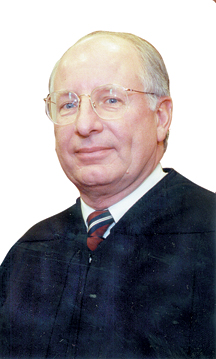On the evening of April 18, 2011, two plainclothes narcotic detectives in an unmarked vehicle observed a car travel left of center. Although they weren’t on traffic duty, the officers stopped the car because of the erratic driving.
Detective Will Speakman approached the driver – Amanda Straley – who was alone in the car. He noted the smell of alcohol and asked Amanda to leave the car. Amanda couldn’t produce a driver’s license and she exhibited slurred speech. Speakman got her consent to search the car and her bag, but he found no contraband.
The detectives decided not to pursue any charges but wouldn’t allow Amanda to drive home. They attempted to arrange a ride for her with her mother and her aunt but were unsuccessful. The other detective – Jason Via – phoned the shift lieutenant to get permission to take Amanda home.
Meanwhile, Amanda indicated that she needed to use the restroom and was jumping up and down, “doing a little dance,” as Speakman later testified. There was no restroom available so Speakman told her to wait, but Amanda started to unbutton her pants and stated, “I have got to pee. I have to urinate.” With that, she trotted about 30 feet away to the corner of a building, saying, “I’m not running; I just gotta pee. I don’t care if you have to arrest me…”
She then pulled down her pants and urinated. Speakman avoided looking directly at her but kept Amanda in his peripheral vision.
After Amanda returned, Speakman walked back to where she had been and saw a clear cellophane baggie covered with urine. Inside the baggie there appeared to be crack cocaine.
Amanda was immediately placed under arrest, and the evidence was collected.
Amanda was charged with trafficking in drugs, possession of cocaine, and tampering with evidence.
Before the trial, she filed a motion to suppress all the statements she had made, but the trial court denied the motion and Amanda entered pleas of no contest to the trafficking and possession counts.
The case proceeded to jury trial on the remaining tampering count. She was found guilty and sentenced to concurrent prison terms of nine months for tampering with evidence, and for the trafficking and possession charges.
Amanda appealed, and the court of appeals reversed the tampering conviction. The court stated that in order to be guilty of tampering with evidence, a defendant must “impair” evidence in an investigation that is ongoing or likely to occur by tampering some way with evidence related to the investigation.
After that, her case came before us – the Ohio Supreme Court. The question before us was whether a tampering conviction requires proof that the defendant impaired evidence in an investigation by tampering with evidence related to the investigation.
When we interpret criminal laws, if there is ambiguity in the law, doubts are resolved in favor of the defendant. This rule of strict construction is also known as the “rule of lenity,” and it is part of Ohio law.
Amanda was convicted of tampering with evidence. The tampering law states: “No person, knowing that an official…investigation is in progress, or is about to be or likely to be instituted, shall…alter, destroy, conceal, or remove any record, document, or thing, with purpose to impair its value or availability as evidence in such proceeding or investigation.”
There are three elements of this offense: first, the knowledge of an official investigation in progress or likely to be instituted; second, the alteration, destruction, or removal of the potential evidence; and third, the purpose of impairing the potential evidence’s availability or value in such investigation.
The state argued that the court of appeals misinterpreted the law by unduly limiting the definition of “investigation” to require that the evidence tampered with be related to the investigation of only those charges of which law enforcement was then aware.
The state maintained that an investigation may grow beyond the scope of initial charges. Therefore, the state argued, if law enforcement investigates a suspect for possible criminal conduct, that investigation necessarily encompasses all criminal conduct that law enforcement may discover.
Amanda countered that the state’s expansive reading of the tampering law is inconsistent with its plain language and the rule of lenity. She argued that the purpose of the tampering-with-evidence law is to protect the availability of evidence related to an ongoing investigation during its progress and any related later proceeding.
According to Amanda, the law shouldn’t be broadly interpreted to encompass the discarding of contraband when there is no investigation related to that contraband.
We agreed. The tampering law requires proof that the defendant intended to impair the availability of evidence that related to an existing or likely investigation. Likelihood is measured at the time of the act off alleged tampering.
There’s nothing in the record to suggest that the officers were conducting or likely to conduct an investigation into trafficking or possession when Amanda discarded the baggie of cocaine.
The baggie didn’t relate to either an ongoing investigation of driving while under the influence or driving without a license and had no evidentiary value to a likely investigation of public urination. Thus, the record didn’t support a conviction for tampering with evidence.
The state also brought additional charges related to the contraband that Amanda discarded. And she pled no contest to the trafficking and possession charges. Our decision doesn’t change that; rather, it simply requires that to establish a violation of the tampering law, the state must show that the defendant, with knowledge of an ongoing investigation, altered, destroyed, concealed, or removed any “record, document, or thing” with the purpose to impair its value or availability as evidence in that investigation.
Therefore, by a six-to-one vote, we affirmed the judgment of the court of appeals in reversing Amanda’s tampering conviction.
NOTE: The case referred to is: State v. Straley, 139 Ohio St.3d 339, 2014-Ohio-2139. Case No. 2013-0544. Decided May 29, 2014. Majority opinion written by Justice Judith Ann Lanzinger.

